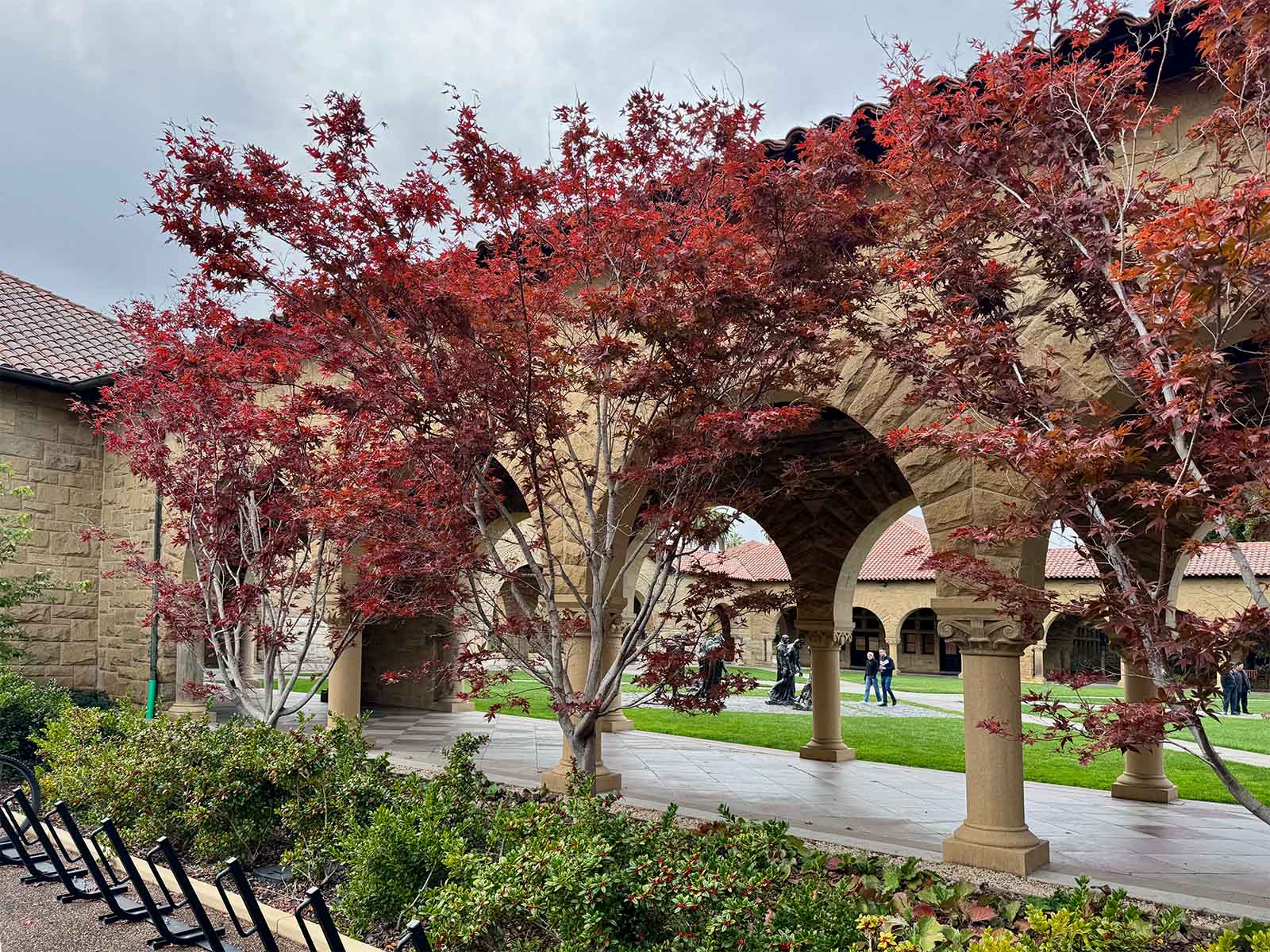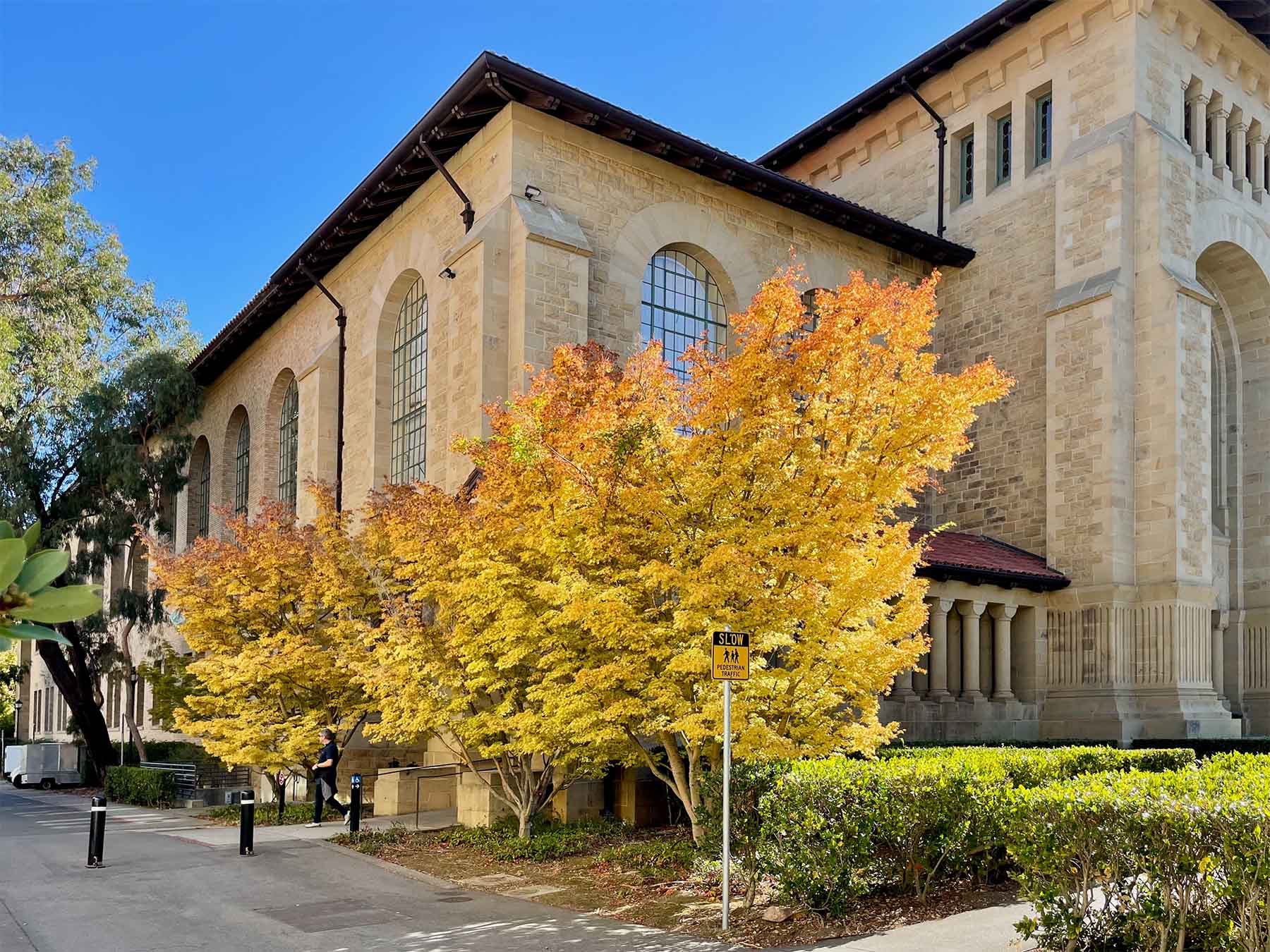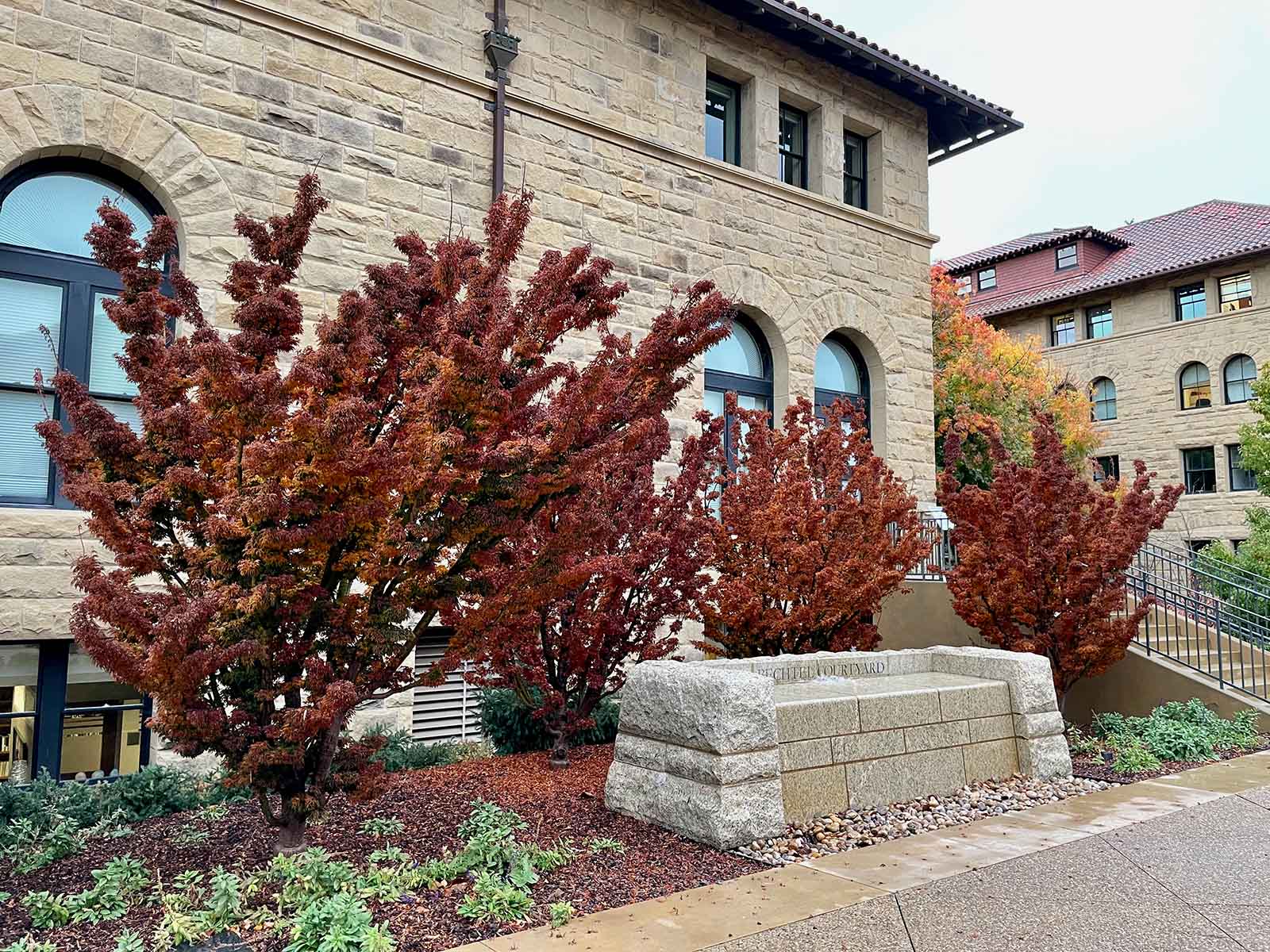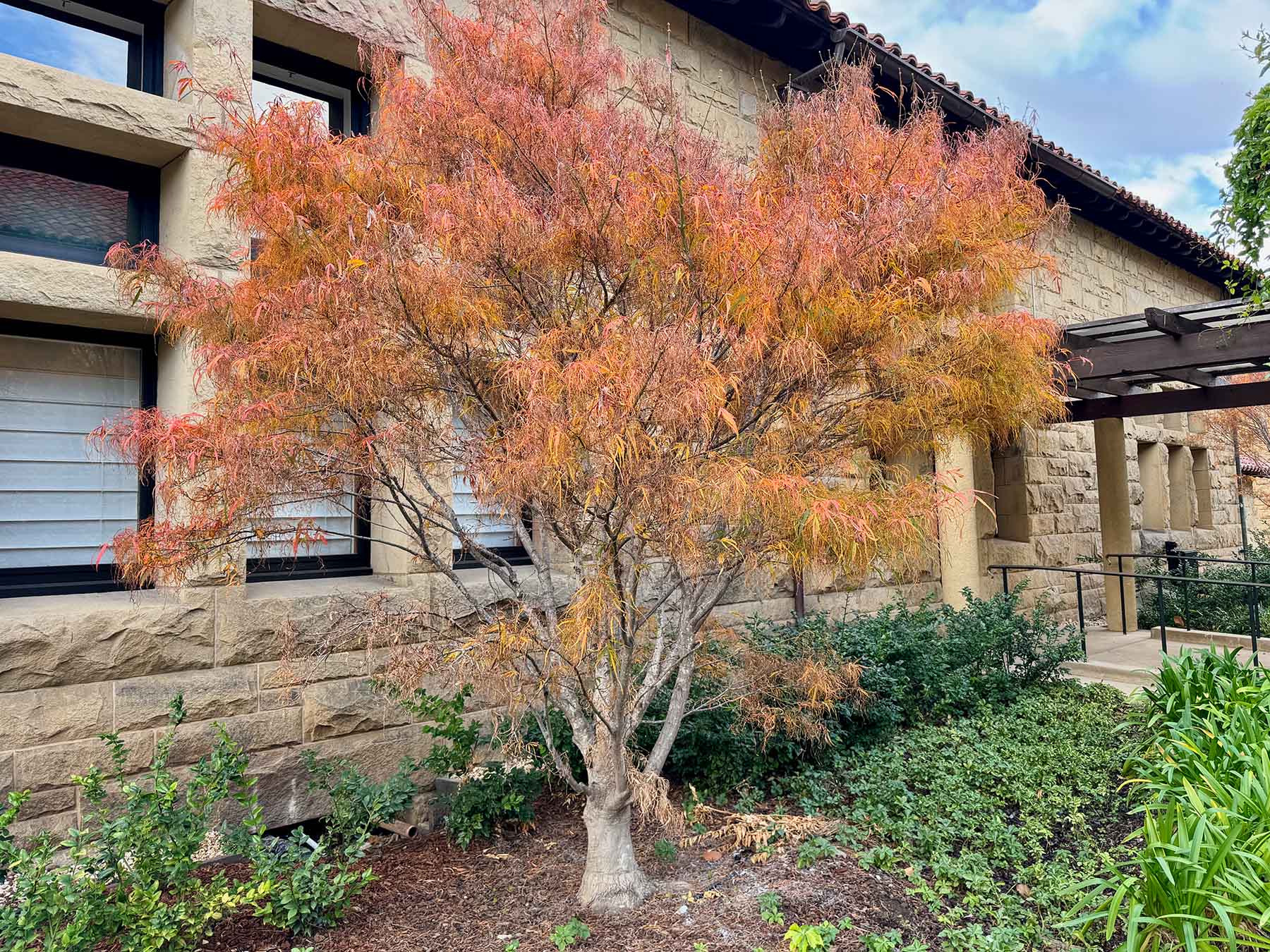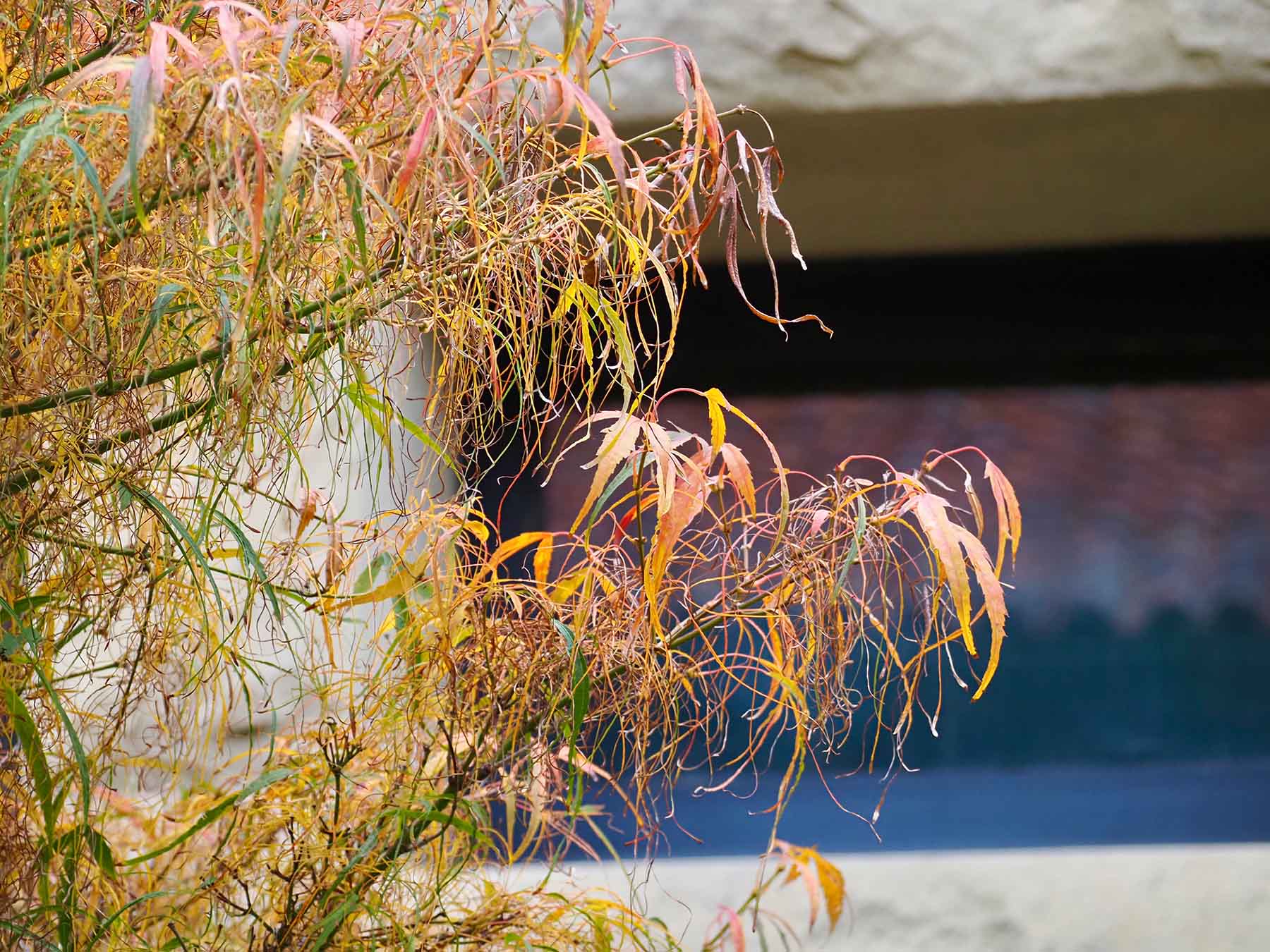Acer palmatum
 Japanese maple
Japanese maple

A most attractive, small deciduous tree with good autumn and spring color. The delicate, deeply dissected leaves are 2 to 3 inches across and have five or more lobes with more or less fancy margins. The flowers are purple and the ¾-inch keys have widely spread wings. The Japanese maple is available in dozens and dozens of varieties with different leaf shapes, color, and habit, and ranges from tree size to small tub subjects. In Japan, where the tree is known as Takao maple, there are hundreds of named forms resulting from the close attention it has received, and deserved, from man since unrecorded time.
Children may enjoy picking up the fallen leaves and watching the variety of ways in which they sail to the ground. Before suggesting this experiment you might look at the leaves that have already fallen (which lie mostly the same side up) and ask whether the kids can suggest how they fall. On campus, seedlings volunteer under moist conditions.
There is a pair at the entry to the passageway between Memorial Church and Building 60, and another a little further in. ‘Nuresagi’ has been favored in recent years; see a row in the courtyards adjacent to Memorial Court, just beyond the arcades. Two ‘Koto no Ito’, with deeply incised leaves, flank the north entrance to Building 10. Handsome examples of the ‘Sango Kaku’ or coralbark variety can be seen at the northwest corner of the Bing Wing of Green Library and at the corner of the Traitel Building across from them. ‘Shishigashira’, with its dark fine leaves and upright form almost evokes a columnar yew in summer. See four at the center of the courtyard behind Encina Hall, behind the water feature. More than a dozen large-leaved ‘Omato’ with rich red fall color are arranged in rows around the plaza north of the Gilbert Biological Sciences Building; their branches often retain the dead leaves in winter.
Beautiful specimens overlooked the courtyard between Herbert Hoover Memorial Building and the George Shultz Building but were removed when the latter was built. New Japanese maples were planted there, of unknown variety.
Name derivation: Acer – Latin for maple; palmatum – hand-like (the leaves).
About this Entry: The main text of this entry is from the book Trees of Stanford and Environs, by Ronald Bracewell, published 2005. Family name updated from Aceraceae to Sapindaceae, Hoover courtyard location added (Dec 2017, SP). Edits; Omata locations added (Feb 2024, SP). More cultivars and locations added (Dec 2024, SP).


